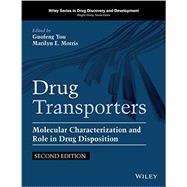This new edition overviews drug transporters and presents the principles of drug transport and associated techniques, featuring new chapters on multidrug and toxin extrusion proteins, placental transport, in silico approaches in drug discovery, and regulatory guidance for drug transport studies in drug development.
• Describes drug transporter families, mechanisms, and clinical implications along with experimental methods for studying and characterizing drug transporters
• Includes new chapters on multidrug and toxin extrusion proteins, placental transport and in silico approaches in drug discovery
• Has a new chapter covering regulatory guidance for the evaluation of drug transport in drug development with global criteria used for drug transporters in clinical trials
• Arranges material to go from fundamental mechanisms to clinical outcomes, making the book useful for novice and expert readers








